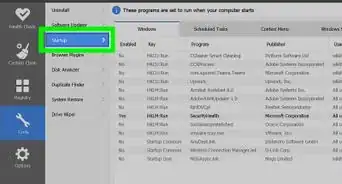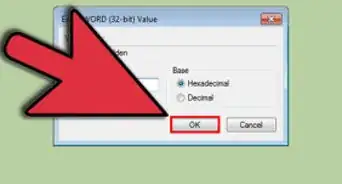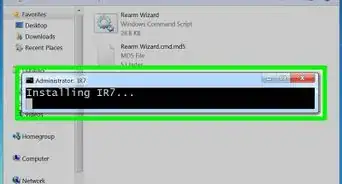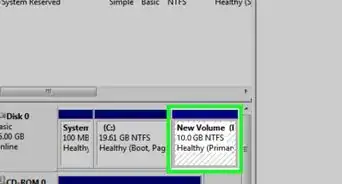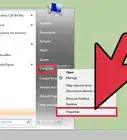This article was co-authored by Spike Baron. Spike Baron is the Owner of Spike's Computer Repair based in Los Angeles, California. With over 25 years of working experience in the tech industry, Spike specializes in PC and Mac computer repair, used computer sales, virus removal, data recovery, and hardware and software upgrades. He has his CompTIA A+ certification for computer service technicians and is a Microsoft Certified Solutions Expert.
The wikiHow Tech Team also followed the article's instructions and verified that they work.
This article has been viewed 261,750 times.
Restoring your Windows 7 computer to its original factory settings returns your system to a factory-fresh software state so you can resell your computer or experience a fresh start as a user. Instructions for restoring your computer's factory settings will vary depending on its manufacturer.
Steps
Dell
-
1Back up and save all important documents and files to an external disk, flash drive, or cloud storage system. Restoring the original factory settings will erase all personal data from the computer.
-
2Power off your computer and disconnect any extra accessories or peripherals. This includes printers, scanners, network cables, and USB drives.
- Remove your laptop from its docking station, if applicable.
Advertisement -
3Power on your computer and press F8 repeatedly when the Dell logo displays on-screen. This opens the Advanced Boot Options menu.
- If the Advanced Boot Options menu fails to open, restart your computer and try again.
-
4Select “Repair Your Computer” using the arrow keys, then press “Enter.” This opens the System Recovery Options menu
-
5Select a keyboard layout and click “Next.”
-
6Sign in as a local user or the administrator, then click “OK.”
-
7Select either “Dell Factory Tools” or “Dell Factory Image Restore,” then click “Next.” This opens the Confirm Data Deletion menu.
-
8Place a checkmark next to “Yes, reformat hard drive and restore system software to factory condition,” then click “Next.” Windows 7 will begin restoring factory settings, which will take at least five minutes to complete. When finished, Windows will inform you the computer has been restored to a factory-new condition.
-
9Click on “Finish.” Your computer will restart and the Windows 7 setup wizard will display on-screen.
Hewlett-Packard (HP)
-
1Back up and save all important documents and files to an external disk, flash drive, or cloud storage system. Restoring the original factory settings will erase all personal data from the computer.
-
2Power off your computer and disconnect any extra accessories or peripherals. This includes printers, scanners, network cables, fax machines, and USB drives.
-
3Power on your computer and click on the “Start” menu.
- If Windows fails to boot up correctly and you cannot access the Start menu, press F11 repeatedly as your computer reboots to bring up the Recovery Manager window, then skip to step #7.
-
4Click on “All Programs,” then select “Recovery Manager.”
-
5Click on “Recovery Manager” again, then type the administrator password.
-
6Select “Yes” when the User Account Control window asks if you want the program to make changes to your computer. The Recovery Manager window will display on-screen.
-
7Select “System Recovery” below the section entitled “I need help immediately.”
-
8Select “Yes,” then click “Next” when asked if you want the computer restored to its original factory condition. Your computer will reboot, and display the Recovery Manager window once again.
-
9Select “System Recovery,” then select “Recover without backing up your files.”
-
10Click on “OK” to confirm you want factory settings restored, then select “Finish.” Your computer will restart and display the Windows 7 setup screen.
Acer
-
1Back up and save all important documents and files to an external disk, flash drive, or cloud storage system. Restoring the original factory settings will erase all personal data from the computer.
-
2Restart your computer and press the left Alt + F10 keys when the Acer logo displays on-screen. This displays the Acer eRecovery Management application.
- Press “Enter” if the Microsoft Windows boot screen appears to advance to the eRecovery Management window.
-
3Select “Completely Restore System to Factory Defaults,” then click “Next.”
-
4Click “Next” again to confirm you want to restore the original factory settings. The restoration process will begin, which can take anywhere between 10 and 60 minutes. When factory restoration is complete, the Windows 7 setup wizard will display on-screen.
Toshiba
-
1Back up and save all important documents and files to an external disk, flash drive, or cloud storage system. Restoring the original factory settings will erase all personal data from the computer.
-
2Power off your computer and disconnect any extra accessories or peripherals. This includes printers, scanners, network cables, fax machines, and USB drives.
-
3Verify that your Toshiba computer is connected to a power source. This prevents the computer from powering down during the factory restore process.
-
4Restart your computer, then press and hold down the “0” key on the keyboard. This brings up the recovery warning screen.
- If the recovery warning screen fails to display, restart your computer and try again.
-
5Click on “Yes” to confirm that you want to proceed with system recovery. This opens the Toshiba Recovery Wizard.
-
6Select “Recovery of Factory Software,” then follow the on-screen instructions to restore your computer's original factory settings. Your computer will reboot several times throughout the process, and display the Windows 7 welcome screen when complete.[1]
All Other Brands
-
1Back up and save all important documents and files to an external disk, flash drive, or cloud storage system. Restoring the original factory settings will erase all personal data from the computer.
-
2Restart your Windows 7 computer, then watch your computer screen to find the appropriate bootup command. In most cases, bootup commands will display at either the top or bottom of your screen.
-
3Press the appropriate bootup command to access your computer's recovery partition. Bootup commands will vary depending on your computer's manufacturer:
- Asus: Press F9
- Lenovo: Press F11
- MSI: Press F3
- Samsung: Press F4
- Sony: Press F10
-
4Select the option to restore your computer to factory settings. This option is labeled differently for each manufacturer, since each manufacturer uses different software for the built-in recovery partition. In most cases, this option will read as “Restore factory settings” or “Perform factory restore.”
-
5Follow the on-screen instructions to restore the original factory settings. Your computer may reboot several times throughout the process, which may take up to one hour to complete. When restoration is finished, the Windows setup wizard or welcome screen will display.[2]
Community Q&A
-
QuestionCan I take laptop back to factory settings (Windows 7) and then upgrade to Windows 10?
 Community AnswerYes, but you will need the Windows 7 key.
Community AnswerYes, but you will need the Windows 7 key.
Warnings
- Restoring your Windows 7 computer to the original factory settings will erase all files and programs excluding the default programs it came with. Back up all important files and data prior to restoring the factory settings.⧼thumbs_response⧽

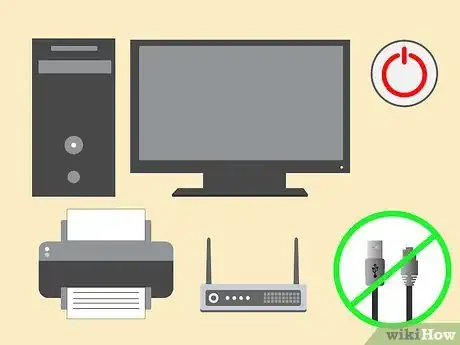

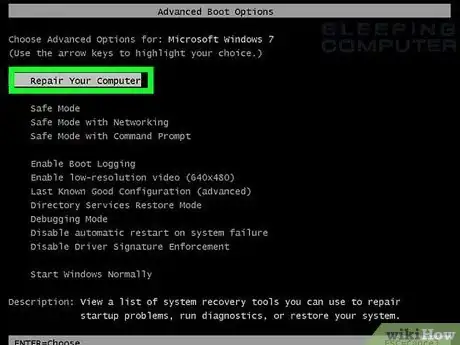


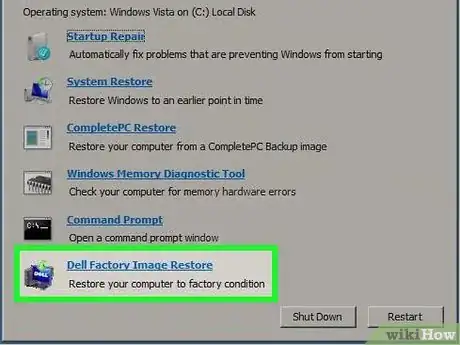
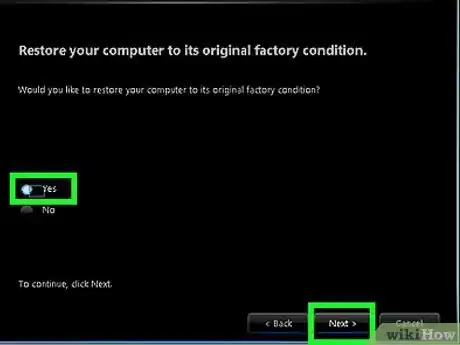
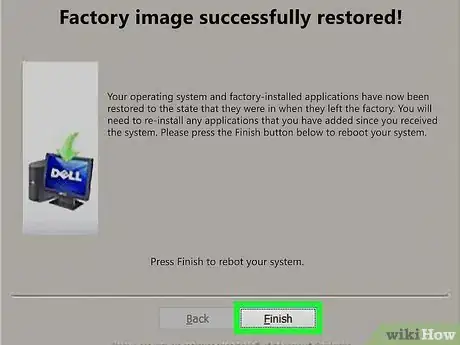



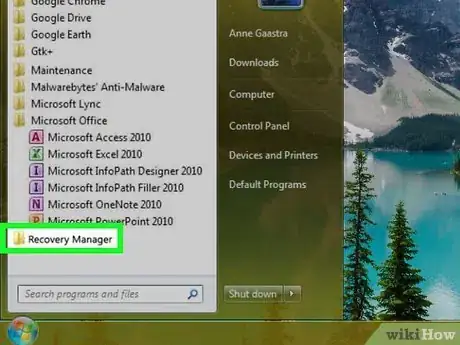









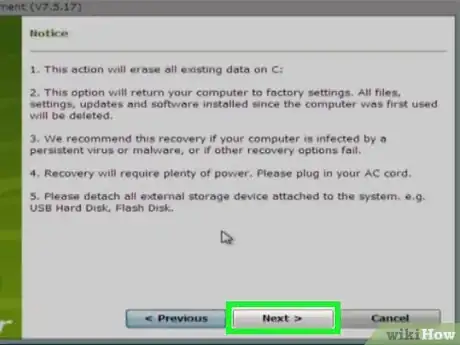


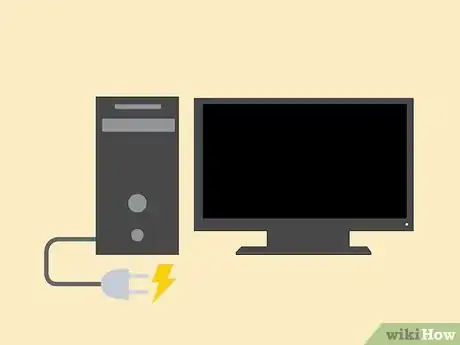


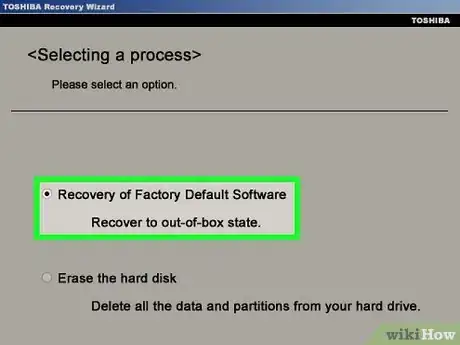
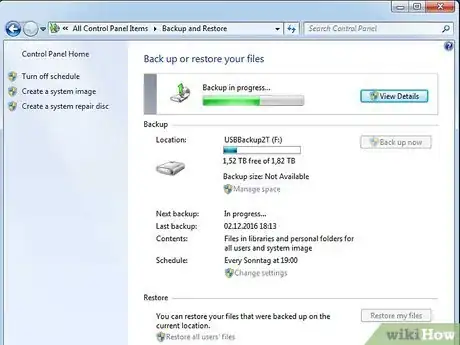


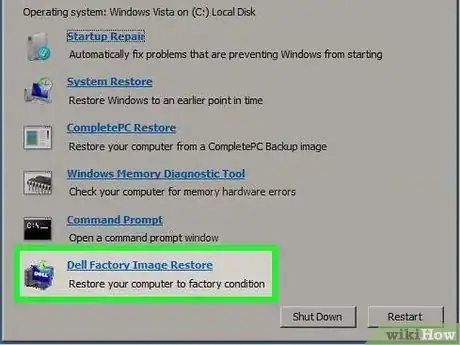
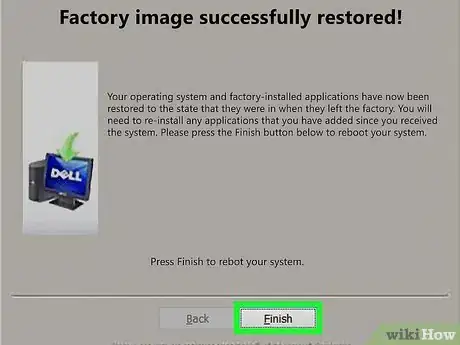


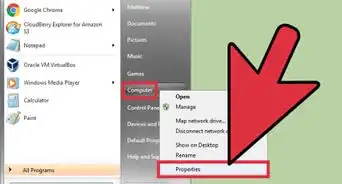


-Step-55-Version-2.webp)



